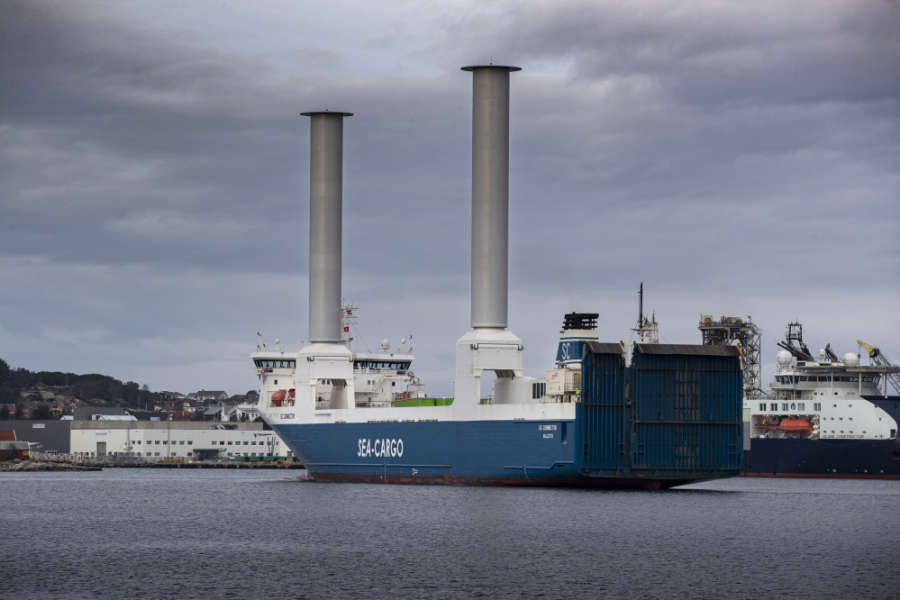During Norsepower’s latest webinar, panellists explored potential market consolidation during the journey to net zero and the subsequent commercial and regulatory drivers impacting decision making for developing resilient fleets. With the prospect of regional regulation and rising commercially driven forces, shipping faces an unprecedented challenge to decarbonise that will require the sector to invest in new initiatives. These are some of the key themes that were raised as part of the discussion:
Transforming operations requires big ticket investment
There is growing acceptance that significant investment is critical to meeting shipping’s perfect storm of demands. The requirements of the International Maritime Organization’s (IMO) incoming EEXI and CII regulations will only be amplified in Europe against the backdrop of the EU’s ‘Fit for 55’ proposals, the impact of likely emissions trading schemes as well as regionally-led environmental mandates. Commercial pressures, including a drive to measure performance through a stringent ESG lens is having a pincer-like effect on operators. This is where transformational technologies come in – radical change requires a complete re-think of operations and there is no silver bullet.
Kris Fumberger, Sustainability Manager at RightShip comments: “Shipowners are already seeing the requirement to invest in many different technologies. Wind propulsion used to be considered a ‘nice to have’ and now is one of the most talked about topics of the era. Numbers are demonstrating the efficiency and double digit emissions and fuel savings are extremely significant.”
Upgrades to wind and weather routing
There has been significant siloed thinking in terms of derating engines for CII and EEXI. However, reducing speed can be mitigated by wind propulsion – with wind the ship can maintain a higher speed using the same amount of fuel. Weather routing helps significantly in terms of optimising the wind option.
Gavin Allwright, Secretary General, International WindShip Association highlights: “We are making submissions at the IMO in terms of EEDI and EEXI to really take a look at this as a substantial contribution and opening that out. When the Fuel EU Maritime proposal came out, it was fuel focussed and it needed to be widened out as it misses out an energy provision technology for wind and solar. This creates a framework for excluding technologies coming in which is a huge concern for the industry.”
Fuel costs rising
Maersk has been ordering new methanol ships and fuel costs are looking to be 3 or 4 times higher than previous fuel costs. This sort of increase in fuel costs means that huge savings from clean technologies will be a no brainer. All possible measures will be taken to minimise fuel consumptions for both the environment and operational costs.
Once EU ETS is initiated, and carbon prices increase, the energy price will be so significant it would slash the payback time for investment in clean technologies such as wind propulsion. There will be huge changes in the market based on the increase of available technologies and the fuel costs. Additionally, if there is a carbon tax, that will impact everyone. If that was equitable and proceeds were to be used for installation, this could be a hugely positive circular tax for installations and retrofits.
Tuomas Riski, CEO, Norsepower, says: “The pressure to decarbonise is coming from all sectors and levels of the dialogue. We are increasingly having more dialogue with financial institutions about reducing carbon emissions and they are looking at ships with clean technologies. Increased customer demands and more interest from financial institutions are present on today’s market.”
Reliable data
Reliable data is essential for giving shipowners confidence is emission reduction technology performance to ensure smart investment decisions. Norsepower Rotor Sails have demonstrated significant savings and calculations are based on long term averages. Recent case studies with Sea Cargo’s SC Connector demonstrated the vessel was sailing at 20 knots with Rotor Sails, when the main engine enabled 13knots.
Reassurance from class societies is key
The industry is increasingly looking to class societies to provide the independent validation that shipowners need to build confidence in using such technologies, particularly in terms of their performance when integrated with other solutions. In this respect, rotor sails complement other clean technologies and investing in multiple technologies to become compliant is becoming far more common. For example, whilst one technology might tick a particular box to meet a compliance requirement, when used in combination with other technologies the collective operation could realise a far greater advantages in terms of overall performance.
Emissions reporting
There are a number of reporting requirements and with CII, if non-compliant, it has to go into SEEMP reporting. Reporting requirements are essential and additional national or regional requirements will make it more difficult. CII is based on the IMO DCS not on the more specific cargo related EU MRV or EEOI. More convergence at IMO would be essential to ensure a more streamlined approach to reporting.
The industry is collaborating and together the industry can reduce hurdles in the way of meeting the challenge of climate crisis. The industry needs to harmonise compliance mechanisms and change what we are doing and how we are doing it. CII will put pressure on the market and limiting an engine is not enough, it is being recognised and big ticket investment is here to stay. There is certainly a shift in approach where shipowners and operators are being more collaborative and making more major investments, particularly due to outside pressures such as EU ETS that will increase fuel prices. There is no doubt, to future proof a vessel for the next 5-10 years, major investment does need to take place. If used in the right way, these investments have the potential to radically improve performance if applied in the right way rather than be expensive box ticking tools.
Watch the webinar in full, here.


